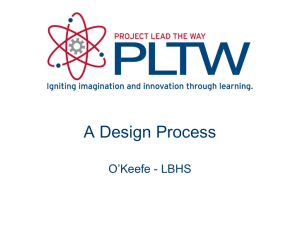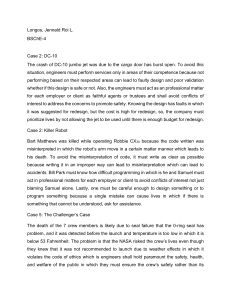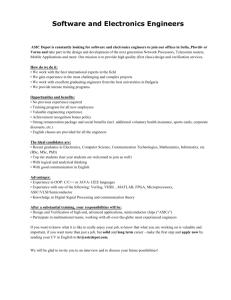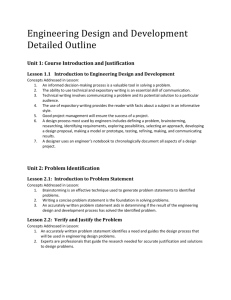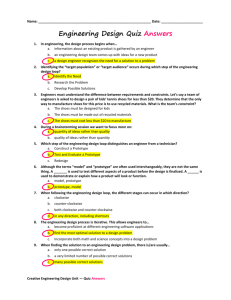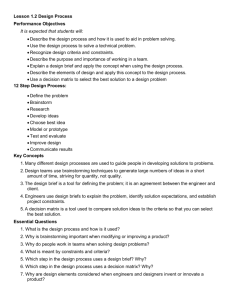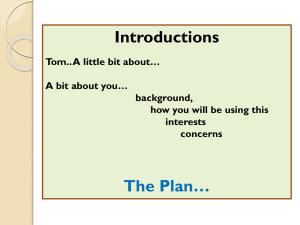Critical concepts © 2005 Edwin Ellis www.GraphicOrganizers.com
advertisement
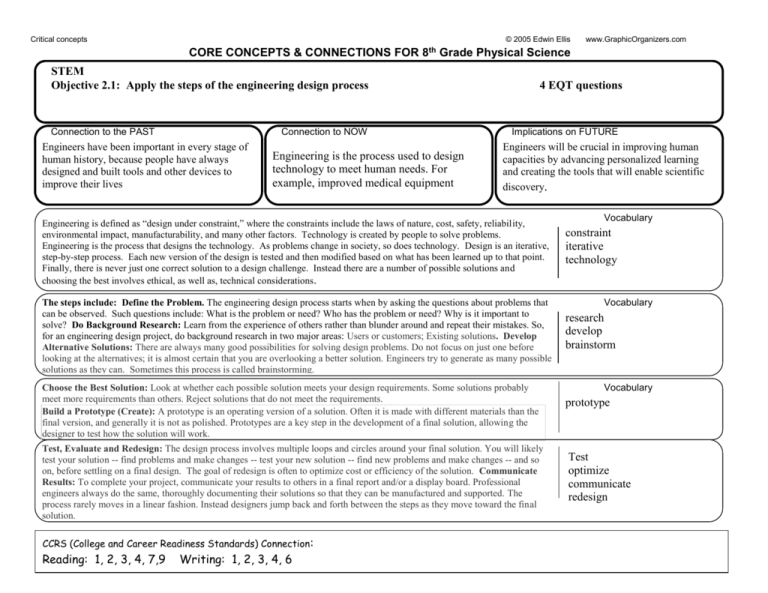
Critical concepts © 2005 Edwin Ellis CORE CONCEPTS & CONNECTIONS FOR 8th Grade Physical Science STEM Objective 2.1: Apply the steps of the engineering design process Connection to the PAST Connection to NOW Engineers have been important in every stage of human history, because people have always designed and built tools and other devices to improve their lives Engineering is the process used to design technology to meet human needs. For example, improved medical equipment 4 EQT questions Implications on FUTURE Engineers will be crucial in improving human capacities by advancing personalized learning and creating the tools that will enable scientific discovery. Engineering is defined as “design under constraint,” where the constraints include the laws of nature, cost, safety, reliability, environmental impact, manufacturability, and many other factors. Technology is created by people to solve problems. Engineering is the process that designs the technology. As problems change in society, so does technology. Design is an iterative, step-by-step process. Each new version of the design is tested and then modified based on what has been learned up to that point. Finally, there is never just one correct solution to a design challenge. Instead there are a number of possible solutions and choosing the best involves ethical, as well as, technical considerations. The steps include: Define the Problem. The engineering design process starts when by asking the questions about problems that can be observed. Such questions include: What is the problem or need? Who has the problem or need? Why is it important to solve? Do Background Research: Learn from the experience of others rather than blunder around and repeat their mistakes. So, for an engineering design project, do background research in two major areas: Users or customers; Existing solutions. Develop Alternative Solutions: There are always many good possibilities for solving design problems. Do not focus on just one before looking at the alternatives; it is almost certain that you are overlooking a better solution. Engineers try to generate as many possible solutions as they can. Sometimes this process is called brainstorming. Choose the Best Solution: Look at whether each possible solution meets your design requirements. Some solutions probably meet more requirements than others. Reject solutions that do not meet the requirements. Build a Prototype (Create): A prototype is an operating version of a solution. Often it is made with different materials than the final version, and generally it is not as polished. Prototypes are a key step in the development of a final solution, allowing the designer to test how the solution will work. Test, Evaluate and Redesign: The design process involves multiple loops and circles around your final solution. You will likely test your solution -- find problems and make changes -- test your new solution -- find new problems and make changes -- and so on, before settling on a final design. The goal of redesign is often to optimize cost or efficiency of the solution. Communicate Results: To complete your project, communicate your results to others in a final report and/or a display board. Professional engineers always do the same, thoroughly documenting their solutions so that they can be manufactured and supported. The process rarely moves in a linear fashion. Instead designers jump back and forth between the steps as they move toward the final solution. CCRS (College and Career Readiness Standards) Connection: Reading: 1, 2, 3, 4, 7,9 Writing: 1, 2, 3, 4, 6 www.GraphicOrganizers.com Vocabulary constraint iterative technology Vocabulary research develop brainstorm Vocabulary prototype Test optimize communicate redesign
